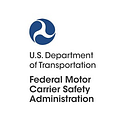April is National Distracted Driving Awareness Month, and it is everyone’s responsibility to take a moment to remember that driving distracted, even if it is for less than a second, can have tragic consequences. Whether it may be reaching for a beverage or a bite to eat, scanning the radio for your favorite station, adjusting the temperature controls, or attending to other passengers, these are just a few of the many examples of distracted driving.
Distracted driving is not just about cell phone use behind the wheel — which in itself is a serious problem among the driving public — it’s also about anything that takes a driver’s hands off the wheel, eyes off the road, and mind off driving.
In 2020, the latest year for available National Highway Traffic Safety Administration data, 3,142 people were killed and an estimated additional 324,652 people were injured in motor vehicle crashes involving distracted drivers.[i] Six percent of all drivers involved in fatal crashes in 2020 were reported as distracted[ii] at the time of the crashes (5.2% of drivers of large trucks in fatal crashes were reported to have at least one driver distraction-related factor[iii], according to FMCSA’s Large Truck and Bus Crash Facts).
Being distracted while driving can lead directly to extremely hazardous driving behaviors, including speeding, following too closely, and erratic lane usage. Distractions also reduce a driver’s reaction time when responding to a dangerous situation. For commercial motor vehicle drivers, the large size and weight of their vehicles further increase driving challenges, including slower acceleration and longer braking distances.
So what can you do? Drive focused.
· Put Down the phone. Cell phone use while driving can be habit forming. Set your phone to driving focus or do not disturb mode when getting in your vehicle. If you are struggling to avoid cell phone use, put the phone away where you cannot reach it, like in the back seat or trunk of your vehicle. Or hand it to a passenger to manage it for you. Pull over to a safe location if there is an urgent need to use your cell phone.
· Get adjusted. Check and adjust your vehicle’s settings and controls (GPS, seats, mirrors, climate controls, sound system, etc.) before you depart.
· Store your gear. Secure loose gear in the vehicle to avoid reaching for items that can fall or roll around while driving.
· Snack smart. Finish eating and drinking before you get behind the wheel.
· Groom before you go. Finish dressing and personal grooming — like combing hair or putting on makeup — before you get into your vehicle.
· Limit passengers. Limit the number of passengers in your vehicle to reduce distractions and enlist their help if you need something while driving.
· Keep kids and pets safe. Children should travel in age- and size-appropriate car seats and pets should be secured with safety restraint devices.
The temptation to multi-task while behind the wheel is real for drivers all across America, no matter how far we are going, what our circumstances are, or how experienced we are as drivers. While behind the wheel, nothing is more important than arriving at our destination safely. Driving requires full attention, period. With commitment and advanced planning, everyone can eliminate distractions to focus on the road ahead. Remember, it’s not just your life that depends on it.
[i] https://crashstats.nhtsa.dot.gov/Api/Public/ViewPublication/813266
[ii] https://crashstats.nhtsa.dot.gov/Api/Public/ViewPublication/813309
[iii] https://www.fmcsa.dot.gov/safety/data-and-statistics/large-truck-and-bus-crash-facts-2020
